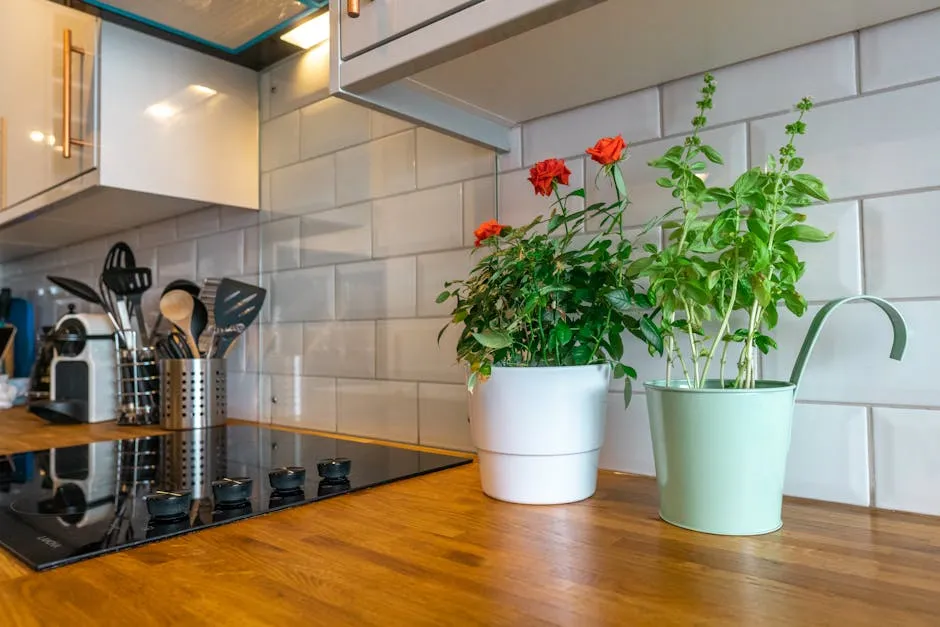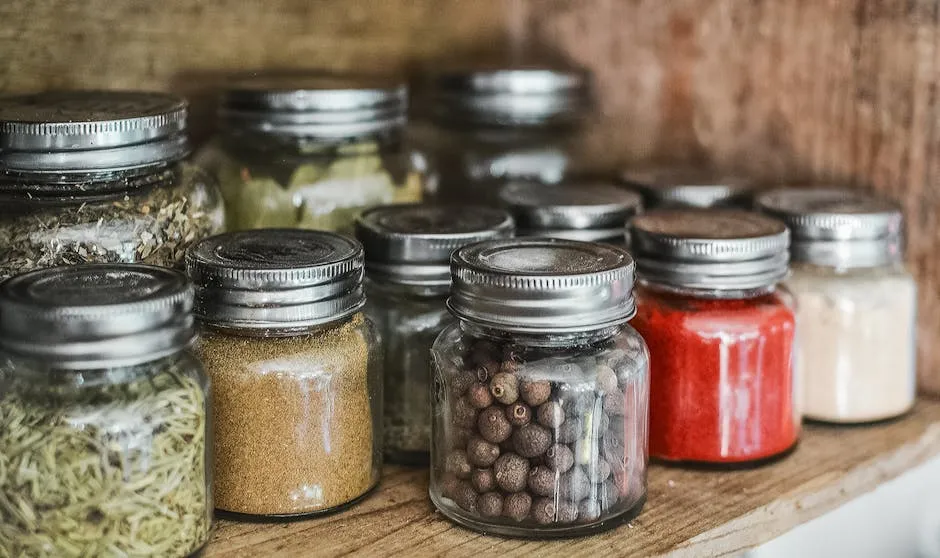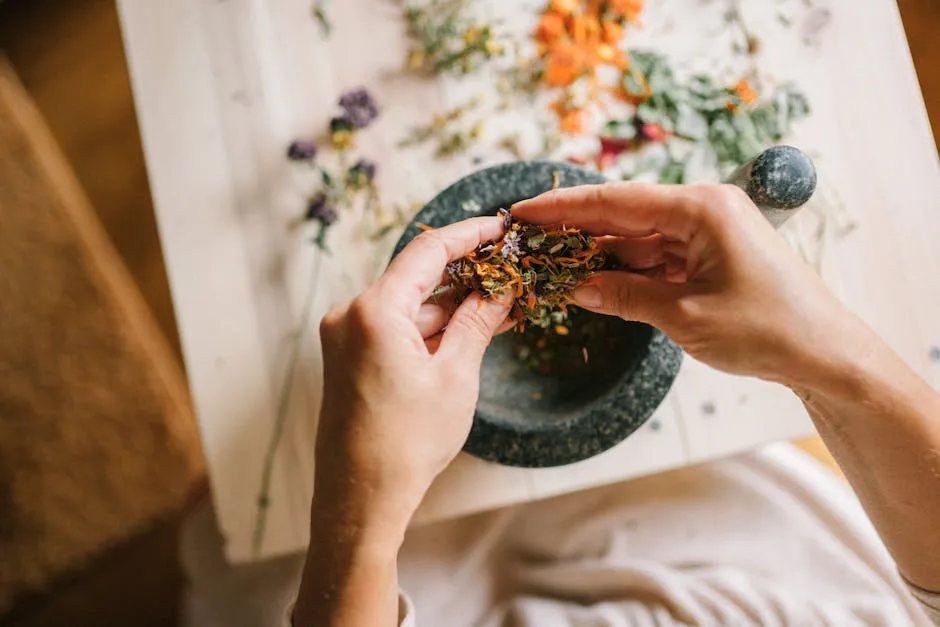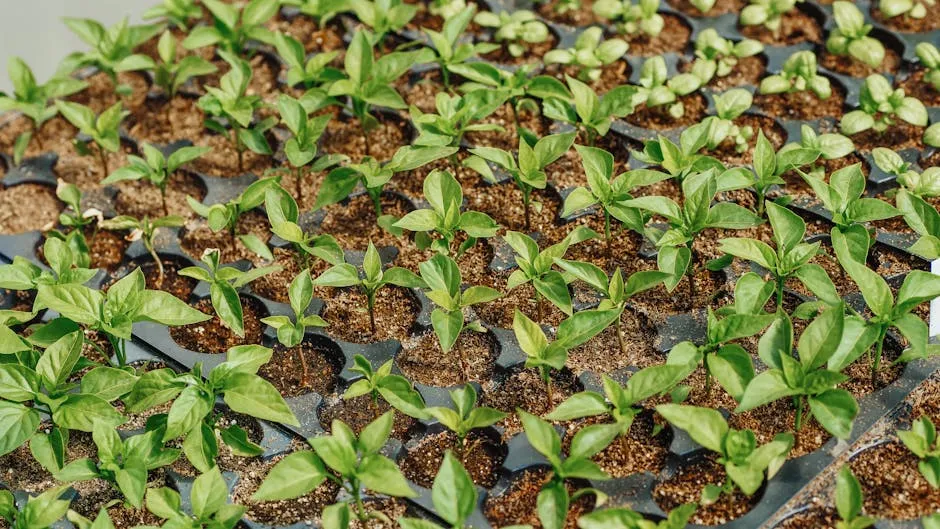

Tips for Growing Herbs in Small Urban Spaces
Introduction
Urban herb gardening is taking off! City dwellers are discovering this green thumb trend, transforming tiny balconies and windowsills into lush gardens. Why? Fresh herbs add flavor to meals, improve air quality, and bring a slice of nature into concrete jungles. Plus, growing your own herbs is a cost-effective way to spice up your cooking. Imagine snipping off a sprig of basil right before tossing it into your pasta; now that’s fresh!
This article aims to equip you with practical tips and techniques for successfully growing herbs in small spaces. Whether you’re a seasoned gardener or just starting, you’ll find valuable insights to cultivate your own herb haven. Let’s dig in and see how you can make the most out of your limited space while enjoying the perks of homegrown herbs.

Assessing Your Urban Gardening Space
Determining Your Space
First things first: evaluate your available gardening space. Do you have a sunny balcony, a small yard, or just a windowsill? Each of these areas can be transformed into a herb paradise. Measure your space and take note of its dimensions. Even a few pots on a countertop can work wonders! Consider using an Indoor Herb Garden Starter Kit to get you started!
Consider where you spend the most time. If you enjoy lounging on your balcony, that’s the perfect spot for your herb garden. You want your plants to be accessible and easy to tend to.

Understanding Sunlight Exposure
Now that you know your space, let’s talk sunlight. Observe how the sun moves throughout the day in your chosen area. Most herbs need at least six hours of direct sunlight daily. Use a simple app or a sun-tracking tool to assess how much light different spots receive.
This step is crucial because herbs like basil and rosemary thrive in full sun, while others, like chives and parsley, can tolerate partial shade. Knowing your sunlight patterns will help you make informed choices about which herbs to plant and where to place them. Adding a LED Grow Light can help if you notice your herbs aren’t getting enough natural light!

Microclimates
Next up: microclimates. These are small areas within your garden that have unique environmental conditions. For example, a corner near a wall may be sunnier or warmer than an open space. Take note of these variations!
Use microclimates to your advantage. Position sun-loving herbs in the warmest spots and shade-tolerant varieties where they can escape the harsh midday sun. This approach allows you to maximize growth potential, even in limited space. With a little observation and creativity, you can turn your compact area into a thriving herb haven!
Choosing the Right Herbs
Compact Varieties
When it comes to small spaces, choosing compact herbs is essential. Basil is a favorite, thriving in pots with its lovely aroma and versatile flavor. Chives are another great choice; they grow tall but remain slim, making them perfect for containers. Thyme is a true space-saver; it sprawls elegantly while adding a punch to your dishes. Mint, while vigorous, can be contained in pots to prevent it from taking over your garden. These herbs fit snugly into small areas, allowing you to maximize your urban gardening efforts. You can find a great selection of Herb Garden Seeds Variety Pack to get started!

Culinary Preferences
Consider your cooking style when selecting herbs. If you’re a fan of Italian cuisine, basil, oregano, and rosemary should be on your list. For those who love Asian flavors, cilantro, lemongrass, and Thai basil are excellent picks. By choosing herbs that align with your culinary adventures, you’ll ensure that your small garden yields ingredients you’re excited to use. This not only makes cooking more enjoyable but also helps you connect with your food, creating a delightful experience right from your urban oasis.

Perennials vs. Annuals
When deciding between perennial and annual herbs, think about maintenance. Perennials like rosemary and sage come back year after year, offering low-maintenance options for busy urban gardeners. These hardy herbs not only provide fresh flavors but also enhance the aesthetics of your space, with their evergreen foliage adding a touch of green to your garden. In contrast, annual herbs like basil and parsley must be replanted each year. Opting for a mix of both allows for a vibrant garden all year round, where you can enjoy the benefits of both types.

Smart Planting Techniques for Limited Spaces
Vertical Gardening
Wall Planters
Wall-mounted planters are a game changer for small spaces. By utilizing vertical surfaces, you can grow herbs like mint, thyme, and chives without sacrificing precious floor space. These planters come in various designs, from pocket styles to shelves, allowing you to pick a look that matches your decor. Simply fill them with potting soil, secure them to your wall, and plant your herbs. Regular watering and sunlight are key; position them where they’ll receive adequate light. This not only beautifies your space but also makes your herbs easily accessible for cooking. For the best results, consider using Vertical Wall Planters!

Tiered Planting
Tiered planters take vertical gardening to the next level. These multi-level systems create a stunning visual effect while maximizing planting space. Herbs like basil, parsley, and cilantro thrive in tiered gardens, each layer providing ample room for growth. Arrange your planters in a sunny spot, ensuring each tier gets enough light. The design also facilitates watering, as excess moisture from the top tiers trickles down, nourishing the lower levels. This clever planting technique allows you to enjoy a lush herb garden without overwhelming your small space. Check out this Tiered Plant Stand for a stylish solution!

Container Gardening
Selecting Containers
Choosing the right containers is crucial. Opt for pots made from durable materials like terracotta or recycled plastic. Ensure they’re the appropriate size for your herbs; smaller herbs can thrive in one-gallon pots, while larger varieties like rosemary need more space. Consider using hanging baskets or window boxes to save even more space. Creative container combinations can add flair to your garden while providing a functional growing environment. Don’t forget to grab some Terracotta Pots for that classic look!

Proper Drainage
Good drainage is vital for healthy herb growth. Always select containers with drainage holes to prevent waterlogging. If you’re using pots without holes, consider drilling some yourself. Adding rocks or gravel at the bottom can further improve drainage. This simple step helps keep your herbs thriving, preventing the dreaded root rot. Remember, happy herbs equal happy cooking, so ensure they have the right environment to flourish. A Soil Moisture Meter can help you keep track of moisture levels!

Care and Maintenance
Watering Techniques
Watering Guidelines
Watering herbs requires a bit of finesse. Keep the soil consistently moist but not drenched. A good rule of thumb is to water deeply but less frequently. Stick your finger into the soil about an inch deep. If it feels dry, it’s time to give your herbs a drink! Water them at the base to prevent fungal diseases. Early mornings are the best time to water, allowing the leaves to dry out throughout the day. This helps keep your herbs healthy and thriving. To make watering easier, consider using Plant Watering Globes!

Signs of Over/Under-Watering
So, how do you know if you’re over or under-watering? Yellowing leaves often indicate too much water. In contrast, crispy, wilting leaves signal your herbs are parched. If you notice your plants drooping, it’s a sign they need hydration. Conversely, if the leaves are falling off or the stems seem mushy, it’s time to ease up on the watering. Regularly check your plants and adjust your watering schedule as needed to keep them in top shape!

Fertilizing and Soil Health
Choosing the Right Soil
Soil is the foundation of your herb garden. Opt for a high-quality potting mix designed for container plants. This ensures proper drainage and provides essential nutrients. Adding compost can enhance the soil’s fertility and improve its structure. Even a small handful can work wonders! It keeps the soil healthy and your herbs happier. Remember, herbs are like us; they thrive when they’re well-fed! For the best results, try using Organic Potting Soil!

Organic Fertilizers
When it comes to fertilizing, organic options are best. They’re gentle on your plants and the environment. Look for products like fish emulsion or seaweed extract. These natural fertilizers provide essential nutrients without harsh chemicals. Apply them every four to six weeks during the growing season to give your herbs an extra boost. A little love goes a long way in maintaining a flourishing herb garden! For more tips, check out the best organic fertilizers for vegetable gardens in small spaces. You might want to try Fish Emulsion Fertilizer for a nutrient boost!

Pest Management
Common Pests and Solutions
Urban herb gardens can attract a few uninvited guests. Aphids, spider mites, and whiteflies often wreak havoc on your precious plants. But fear not! There are plenty of organic solutions. Start by encouraging a healthy garden ecosystem. Spray your herbs with a mixture of water and a few drops of dish soap to deter those pesky pests. You can also use Pest Control Spray for extra protection!
Introduce beneficial insects like ladybugs and lacewings, which feast on aphids. Neem oil is another effective weapon against pests; just mix it with water and spray as needed. Regularly check your plants for signs of trouble, and act quickly to keep your herbs happy and healthy.

Encouraging Beneficial Insects
Who knew your garden could be a haven for helpful bugs? Attracting beneficial insects is crucial for organic pest control. Plant flowers like marigolds, daisies, and yarrow nearby. These beauties provide nectar and pollen, drawing in ladybugs and lacewings.
Creating a diverse garden with various plant types can also boost the presence of these helpful critters. Avoid using synthetic pesticides, as they can harm beneficial insects. Instead, adopt a holistic approach by nurturing your garden’s ecosystem. Soon, you’ll have a buzzing community of natural pest controllers, keeping your herb garden flourishing! Consider creating a Ladybug Habitat to attract these little helpers!
FAQs
What herbs are easiest to grow in small spaces?
If you’re just starting, try these beginner-friendly herbs: Basil: A versatile favorite for cooking. Chives: Easy to grow and great for garnishing. Parsley: A culinary staple that’s hard to kill. Thyme: Compact and perfect for small pots. Mint: A vigorous grower, but keep it contained!
How much sunlight do herbs need to thrive?
Most herbs enjoy sunlight, requiring at least six hours daily. However, some can tolerate partial shade. Here’s a quick guideline: Full sun: Basil, rosemary, oregano. Partial shade: Chives, parsley, cilantro. Assess your space’s sunlight to choose the right herbs for your conditions.
Can I grow herbs indoors?
Absolutely! Indoor herb gardening is feasible and fun. Use pots on windowsills or shelves that receive sunlight. Ideal indoor herbs include: Basil: Needs lots of light. Chives: Thrive in moderate light. Mint: Can grow in lower light. Using grow lights can further enhance growth if natural light is insufficient.
How do I prevent pests in my herb garden?
Pests can be pesky, but you can manage them organically. Here are some tips: Encourage beneficial insects: Ladybugs and lacewings love to munch on pests. Use insecticidal soap: Spray a diluted soap solution on affected plants. Regularly inspect plants: Catch infestations early to prevent spreading. Maintaining good plant health also deters pests.
What is the best way to harvest herbs?
Harvesting techniques matter! To encourage bushy growth, follow these tips: Use clean scissors: Always snip above a leaf node to stimulate growth. Don’t over-harvest: Leave enough foliage for the plant to thrive. Regularly prune: Trimming herbs encourages fresh new leaves and keeps plants healthy. Happy harvesting!
Please let us know what you think about our content by leaving a comment down below!
Thank you for reading till here 🙂
All images from Pexels



